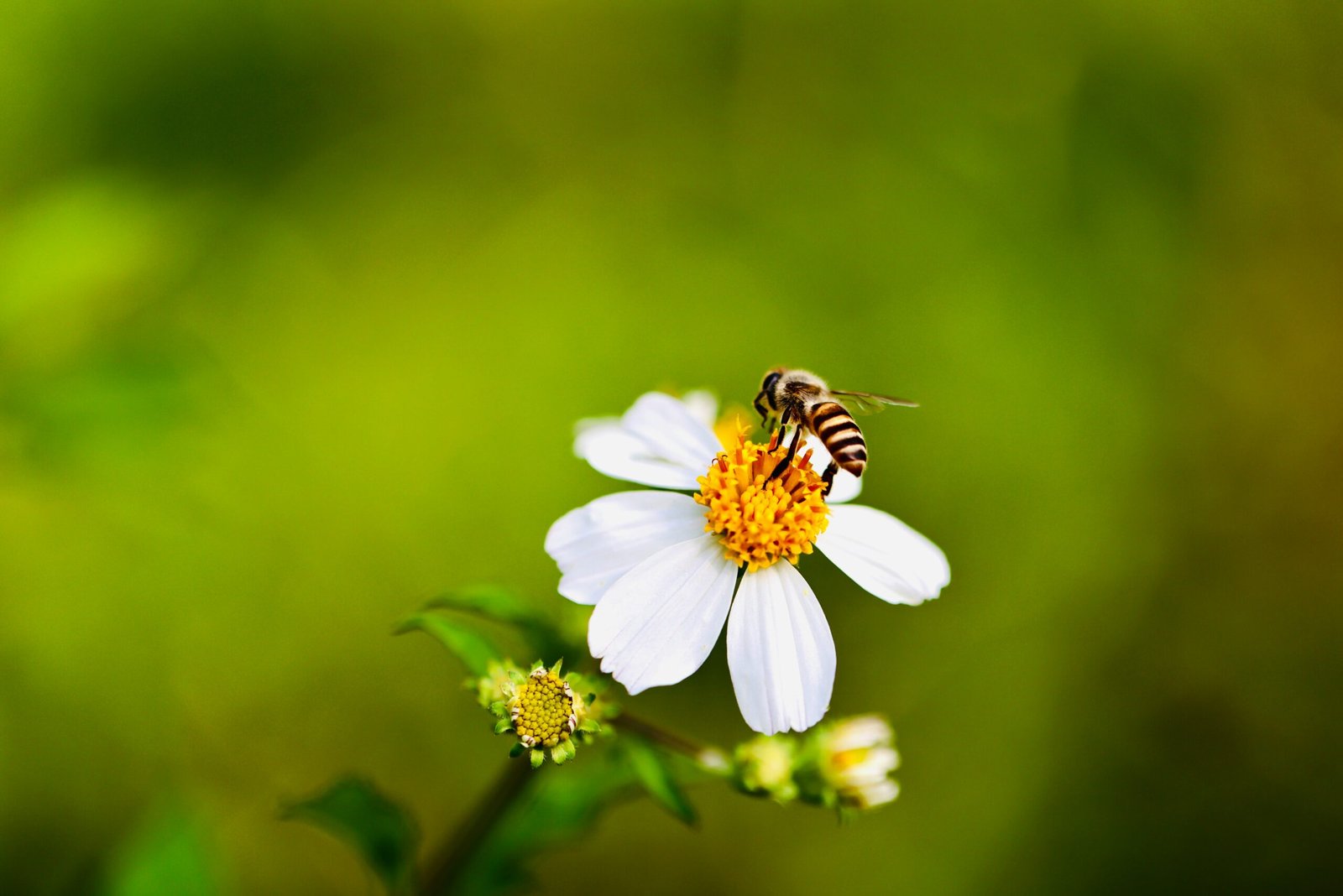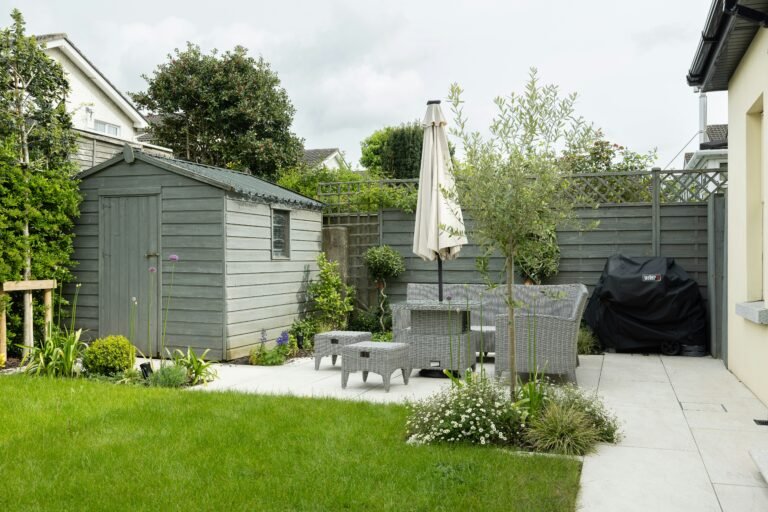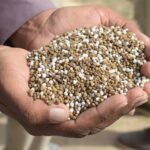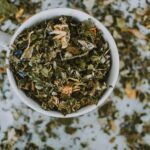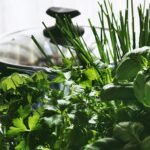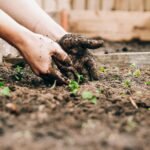If you’ve ever watched a bee dart from flower to flower or a butterfly glide lazily across a summer breeze, you’ve witnessed nature’s most essential workers in action. Yet, these pollinators—vital to our food systems and ecosystems—are in decline. Creating a pollinator friendly garden is one of the most rewarding ways you can personally make a difference. It transforms even a small patch of land or balcony into a thriving refuge that hums with life.
Quick wins and what you’ll learn
In this guide, you’ll discover how to design, plant, and maintain a garden that attracts bees, butterflies, and other beneficial insects. We’ll cover which bee friendly plants and butterfly garden plants perform best by season, how to build pollinator habitat features like nesting areas and water sources, and why native plants for pollinators are key to long-term success. Even if you only have a few pots or a small yard, you’ll find practical ways to create impact.
My experience starting small
When I first started gardening for pollinators, I didn’t have much space—just a balcony and a few planters. I chose herbs like lavender and thyme, added a small bee bath, and avoided any pesticides. Within weeks, I noticed mason bees nesting in cracks and butterflies stopping by the verbena. That’s when I realized how even the smallest garden can become part of a larger network of pollinator-friendly spaces across neighborhoods.
According to the Xerces Society, more than 85% of flowering plants rely on pollinators to reproduce. By providing food, shelter, and safe spaces, we’re not just gardening—we’re helping to preserve biodiversity. In the next section, we’ll plan how to build your own pollinator friendly garden, step by step, starting with assessing your site and selecting plants that thrive in your region.
How to Plan Your Pollinator Friendly Garden
Designing a pollinator friendly garden begins long before you buy your first packet of seeds. The secret is to plan with intention — choosing the right location, selecting regional plants that thrive naturally, and creating a garden layout that keeps pollinators fed and sheltered all year long.
Sun, soil, and space: assessing your site
Start by observing how sunlight moves across your space. Most bee friendly plants and butterfly garden plants thrive in full sun — ideally six or more hours per day. Take note of any shaded or windy spots, too, since butterflies prefer calm areas for feeding and resting.
Next, test your soil type. You can use an inexpensive kit or look for clues: clay soils feel sticky when wet, sandy soils drain quickly, and loam has a balanced texture. If you’re gardening on a balcony, choose containers with quality potting mix rather than heavy garden soil. The more you understand your site, the better you can match it with native plants for pollinators that truly belong there.
Choosing native plants for pollinators (by region)
Native species are the backbone of any thriving pollinator habitat. They’ve evolved alongside local bees, butterflies, and birds, meaning they provide the right nectar, pollen, and timing for your area.
For example:
- In the U.S. Midwest, coneflowers (Echinacea), bee balm (Monarda), and black-eyed Susans (Rudbeckia) are all favorites.
- In the UK, field scabious (Knautia arvensis) and foxglove (Digitalis purpurea) support bumblebees.
- In Australia, grevilleas and bottlebrushes attract native bees and butterflies alike.
You can check local plant databases like Pollinator Partnership’s EcoRegion guides to find region-specific lists.
Designing for continuous bloom (spring–fall)
Pollinators need consistent food sources throughout the growing season. When I plan my garden, I always aim for a “succession of blooms” — meaning there’s something flowering from early spring through late autumn. Combine early bulbs like crocus and lungwort, midsummer perennials like lavender and salvia, and late bloomers such as asters and goldenrod.
Group plants in clusters of the same species rather than scattering single specimens. Bees and butterflies find it easier to forage when flowers are grouped together, and it creates more visual impact for you, too.
Planning this way ensures your garden is not only beautiful but also functional — a sanctuary of color, sound, and life that welcomes pollinators from the first warm days of spring until the final golden evenings of fall. To supercharge diversity and support natural pest control, see Companion Planting Guide: Best Plant Pairings for a Healthier Vegetable Garden.
Bee Friendly Plants by Season
When it comes to attracting pollinators, timing is everything. A well-planned pollinator friendly garden keeps nectar and pollen available from early spring through late autumn. Bees — from fuzzy bumblebees to tiny solitary species — rely on a steady, diverse diet. By planting in seasonal layers, you’ll make sure they never go hungry.

Early-season nectar & pollen
Early spring is a critical time, as emerging bees need immediate energy after winter dormancy. Look for resilient bloomers that handle cool temperatures.
- Crocus and snowdrops are among the first to flower.
- Lungwort (Pulmonaria) provides both nectar and pollen for long-tongued bees.
- Willow catkins and fruit tree blossoms like cherry or apple support wild bees and hoverflies.
If you live in a colder climate, try to have at least three early-blooming species — this jumpstarts your garden’s ecosystem and encourages repeat visits.
Summer stalwarts
Summer is the high season for pollinators. Here’s where color and variety make the biggest impact. I always include a mix of bee friendly plants like:
- Lavender – beloved for its fragrance and continuous blooms.
- Salvia and catmint (Nepeta) – drought-tolerant and long-flowering.
- Coneflower (Echinacea) and bee balm (Monarda) – excellent nectar sources and visually striking.
Plant them in generous clusters; bees recognize color patterns and prefer foraging in patches rather than single plants. Check out the Royal Horticultural Society’s Plants for Pollinators list for even more inspiration.
Late-season lifelines
As autumn approaches, bees still need to stock up on energy before colder weather sets in. This is when many gardens fade — but yours doesn’t have to. Include:
- Asters, sedum, and goldenrod for their late blooms.
- Sunflowers for both nectar and seeds (birds will thank you too).
- Herbs left to flower, like basil or oregano, which offer a surprise feast for honeybees.
In my own garden, I always let a few vegetables bolt — especially arugula and kale. Their small yellow flowers buzz with activity long after the main season ends.
A bee-friendly garden isn’t about perfection; it’s about continuity. When you offer nectar and pollen across all seasons, your space becomes a dependable refuge that sustains pollinators year-round.
Butterfly Garden Plants & Host Plants
Butterflies add a magical quality to any pollinator friendly garden — but attracting them requires more than just pretty flowers. To truly support butterflies, you need to think about every stage of their life cycle: from egg and caterpillar to chrysalis and adult. This means providing both nectar plants (for adults) and host plants (for caterpillars).
Nectar vs. host plants: what’s the difference?
It’s easy to plant bright blooms and hope butterflies appear, but nectar alone won’t sustain their populations. Adult butterflies feed on nectar, while caterpillars depend on specific host plants to survive. Without those larval food sources, butterflies can’t complete their life cycle.
For example, monarch caterpillars feed exclusively on milkweed (Asclepias spp.), while swallowtails rely on fennel, parsley, and dill. When planning your garden, think of nectar plants as the “dining room” and host plants as the “nursery.” Both are essential.
Top nectar plants for butterflies
Butterflies love clusters of flat or tubular flowers, which give them easy landing pads. Some of the best butterfly garden plants include:
- Zinnias – vibrant and long-blooming annuals.
- Verbena bonariensis – tall, airy, and adored by small butterflies.
- Coneflowers and black-eyed Susans – great for both bees and butterflies.
- Lantana – colorful and ideal for warm climates.
While butterfly bushes (Buddleia) are popular, they can become invasive in some regions. Consider alternatives like Joe-Pye weed or ironweed, which offer abundant nectar without ecological drawbacks. You can find regional recommendations through The National Wildlife Federation’s Native Plant Finder.
Host plants for caterpillars
To create a true pollinator habitat, dedicate a corner of your garden to host plants. These might not always be ornamental, but they’re vital. Try including:
- Milkweed for monarchs
- Fennel, parsley, dill for swallowtails
- Nettles and violets for small tortoiseshells and fritillaries
Don’t worry if these plants look a little chewed — it means your garden is working! I remember the first time I saw a row of milkweed leaves stripped bare; within a week, I spotted monarch chrysalises hanging from my garden fence. It was a small victory that reminded me why I started gardening for pollinators in the first place.
When you grow both nectar and host plants, your garden becomes a complete ecosystem — a home, not just a feeding stop, for butterflies throughout the season.
Water, Shelter & Pollinator Habitat
A thriving pollinator friendly garden isn’t just about flowers — it’s also about creating safe spaces where bees, butterflies, and other beneficial insects can drink, rest, and nest. These habitat features are often overlooked, but they’re what transform a simple garden into a true sanctuary.
Safe water sources
Just like any living creature, pollinators need water. Bees, in particular, prefer shallow, calm water where they can land safely. A simple “bee bath” can be made using a shallow dish filled with pebbles and water — the stones give them a place to perch without drowning. Butterflies love to “puddle,” gathering minerals from damp soil or sand. You can recreate this by placing a shallow tray with moist sand in a sunny spot.
For inspiration, check out the Xerces Society’s water station guide — it’s full of simple, pesticide-free ideas that suit any garden size.
Nesting sites for solitary bees
Not all bees live in hives — many are solitary, nesting in small holes, bare ground, or hollow stems. You can support these unsung heroes by leaving patches of exposed soil or installing bee hotels made from bamboo canes, drilled wood blocks, or bundled hollow stems.
If you’re making a bee hotel, ensure it’s sheltered from rain and faces southeast to catch morning sunlight. I’ve found that a simple handmade one, tucked beneath an overhang, quickly attracts mason bees by early spring.
Shelter from wind and predators
Pollinators need calm, protected environments to feed and rest. Planting hedges, shrubs, or ornamental grasses can act as windbreaks and hiding spots. Even leaving a few logs or piles of leaves in a garden corner can offer shelter for overwintering insects like ladybugs and lacewings.
In the colder months, resist the urge to “clean up” too much — fallen stems, leaf litter, and seed heads provide winter refuge for countless beneficial species.
By combining flowers with food, water, and shelter, you create a pollinator habitat that supports every stage of an insect’s life. It’s a small but powerful act — one that turns your space into a lifeline in a world where pollinators face shrinking natural habitats.
Pesticide-Free Care & Sustainable Maintenance
Once your pollinator friendly garden is buzzing with life, keeping it healthy without harming your new guests is the next challenge. Pesticides, herbicides, and synthetic fertilizers can undo all your good work in a single spray. Instead, focus on natural maintenance that protects both your plants and pollinators.

Avoiding harmful chemicals
Many common garden chemicals contain neonicotinoids, which are toxic to bees and other beneficial insects. Always check labels for “bee-safe” or “organic” certification before using any product. Personally, I stopped using chemical sprays years ago — and while I occasionally deal with a few chewed leaves, the balance of life in my garden has improved dramatically.
For pest control, try Integrated Pest Management (IPM) — a gentle, observation-based approach. Start by identifying the actual pest, then choose the least harmful intervention. For example:
- Knock aphids off with a spray of water.
- Introduce beneficial insects like ladybugs.
- Use neem oil or insecticidal soap sparingly, at dusk, when pollinators are less active.
You can learn more about bee-safe gardening practices through The Xerces Society’s guide to reducing pesticide use. For step-by-step, bee-safe fixes, read Natural Pest Control for Gardens: Proven Organic Solutions That Work.
Mulch, watering, and deadheading
Healthy soil is the foundation of any thriving garden. Add compost or organic mulch to retain moisture, suppress weeds, and feed the soil microbes that support root health. However, leave a few bare spots for ground-nesting bees — a fully mulched bed can make it harder for them to find nesting sites.
Water deeply but infrequently to encourage strong roots. When watering during dry spells, aim for early morning or evening to minimize evaporation and prevent heat stress. Regular deadheading (removing spent flowers) keeps plants blooming longer — ensuring a steady supply of nectar.
Leave the leaves: overwintering for insects
As autumn approaches, resist the urge to tidy up too much. Many pollinators and beneficial insects overwinter in hollow stems, leaf litter, and seed heads. Leaving these in place until early spring provides safe shelter through the colder months.
I used to clear everything in fall — until I learned that butterfly chrysalises and solitary bees often hide in those “messy” corners. Now, I leave a portion of my garden wild, and each spring, I see even more life returning.
By maintaining your garden organically, you’re not just protecting pollinators — you’re building a resilient, self-sustaining ecosystem that will reward you year after year.
Small Spaces: Balcony & Urban Pollinator Friendly Garden
You don’t need a big backyard to create a thriving pollinator friendly garden. Even the smallest balcony, patio, or urban courtyard can become a lifeline for bees, butterflies, and other pollinators. With the right mix of containers, compact plants, and a few thoughtful design choices, your small space can hum with life all season long.
Containers that thrive
In small spaces, containers are your best friends. Choose deep pots with good drainage, and use organic potting mix enriched with compost. I like to group several pots together — it not only looks lush but also makes foraging easier for bees.
Try hardy bee friendly plants like:
- Lavender – perfect for sunny spots and small pots.
- Thyme, basil, and oregano – edible herbs that double as nectar sources.
- Miniature sunflowers or zinnias – bright, long-blooming annuals.
Arrange your containers at different heights using shelves or stands; butterflies and bees appreciate varied levels, and it adds visual depth to your balcony garden.
Gardening up high? Get layout, wind, and watering tips in Inspiring Rooftop Garden Ideas: How to Create a Green Roof in the City.
Compact plant lists and color blocking
Pollinators navigate by color and shape, so clustering flowers of similar hues helps them locate blooms more easily. I often dedicate each container to a single species or color family — for example, one with purple salvia, another with pink verbena, and a third with yellow marigolds.
Choose plants that flower at different times of year to maintain continuous bloom. Compact perennials like sedum, echinacea, and coreopsis are ideal for long-term containers.
Community spaces, window boxes, and shared courtyards
If you have access to a shared garden, courtyard, or community rooftop, think collectively. Even a few extra containers can expand your local pollinator habitat network. A small cluster of native plants for pollinators across multiple balconies can make a meaningful impact — bees travel surprisingly far when food sources are linked.
For window boxes, choose trailing species like calibrachoa, alyssum, or nasturtium — they spill beautifully over the edge and provide easy landing spots for butterflies.
When I lived in an apartment, I added a single hanging basket of verbena outside my window. Within weeks, honeybees from nearby gardens began visiting daily. It was a reminder that in cities, even one flower can make a difference.
By combining smart plant selection, layered containers, and community participation, you can turn the smallest urban nook into a pollinator paradise — one that buzzes with beauty, color, and life.
Troubleshooting
Even the best-designed pollinator friendly garden can hit a few bumps along the way. Don’t worry — these challenges are normal and often easy to fix. Understanding what’s happening helps you adjust naturally while keeping your garden thriving and your pollinators safe.
“Why aren’t pollinators visiting?”
If you’ve planted bee friendly plants and butterfly garden plants but haven’t seen much activity, it may just be a timing issue. Pollinators are highly seasonal — bees emerge once temperatures warm consistently, while butterflies may not appear until mid- to late-summer.
Other possible reasons include:
- Lack of bloom diversity: Make sure you have flowers in multiple shapes and colors.
- Too few blooms: Group plants in clusters; solitary flowers can be hard for bees to find.
- Recent pesticide exposure: Even one chemical treatment nearby can deter pollinators.
Give it time — once your garden matures and blooms overlap, pollinators will return.
Dealing with wasps, aphids, and mites safely
Not all buzzing insects are bees. Wasps often appear where there’s food — especially ripe fruit or sugary drinks. They’re actually beneficial predators, helping control pests like caterpillars and flies. To minimize issues, keep compost covered and remove fallen fruit regularly.
For aphids or mites, skip the chemical sprays. Instead, use these natural tactics:
- Blast affected plants with a hose to remove aphids.
- Introduce ladybugs or lacewings (available from garden centers).
- Apply a mild insecticidal soap at dusk, when pollinators aren’t active.
Pets, kids, and safe garden practices
A family-friendly pollinator habitat means thinking about everyone’s safety. Opt for non-toxic plants and avoid chemical fertilizers or slug pellets. Use organic compost and natural mulch, and teach children to observe insects respectfully. I’ve found that kids are fascinated by bees once they realize how gentle most species actually are.
If you’re allergic to bee stings, consider focusing on butterfly-attracting plants like zinnias, verbena, and cosmos. These draw fewer bees but still support other pollinators.
A note on patience and perspective
Pollinator gardening is a long game. Some plants take a season or two to establish, and wild visitors will increase as your ecosystem stabilizes. My first year, I only saw a handful of bees; by the third, I had dozens of species. Each bloom, nest, and visiting butterfly is a small sign that your garden is working — even when it looks quiet.
Troubleshooting is part of the process, and with observation, small tweaks, and patience, your garden will evolve into a thriving, balanced habitat that supports pollinators year after year.
Conclusion & Next Steps
When I first began building my pollinator friendly garden, I thought it would be a simple act of planting flowers. But over time, I realized it’s far more than that — it’s an invitation for life to return. Each bee that buzzes past, each butterfly that pauses on a bloom, is proof that a small space can make a real difference.
Creating a haven for pollinators doesn’t require perfection or endless effort. It’s about balance, patience, and awareness. By planting native plants for pollinators, avoiding harmful chemicals, and offering simple comforts like water and nesting spots, you become part of a growing movement of gardeners helping to reverse the decline in pollinators worldwide.
My quick-start checklist
If you’re ready to take action, here’s what I recommend:
- Pick 5–7 native flowering plants that bloom at different times of the year.
- Add a bee bath or puddling tray for safe drinking water.
- Leave some wild corners or stems for overwintering insects.
- Avoid pesticides completely — or choose organic alternatives only when necessary.
- Observe and record: notice which bees and butterflies visit your garden, and celebrate every new sighting.
You can find regional planting guides and pollinator maps through trusted sources like Pollinator Partnership or the Xerces Society.
Your garden — whether it’s a balcony, backyard, or community plot — can become part of a vast living network that supports biodiversity and beauty. When you nurture pollinators, you’re also nurturing your connection to nature itself.
So take a deep breath, step outside, and start small. Plant one flower, then another. Before long, your garden will hum with gratitude. 🌿🐝🦋
Alex is the creator of Homely Haven, a space dedicated to simple, stylish ideas for interiors and gardens alike. With a passion for cozy living rooms, inviting outdoor spaces, and practical DIY solutions, Alex shares tips and guides that help turn any house into a true home.
From budget-friendly decorating hacks to weekend garden projects, the goal is always the same: to inspire you to create spaces that feel personal, beautiful, and welcoming. When not writing, Alex is usually rearranging furniture, sketching new garden layouts, or exploring design trends for the next project.

